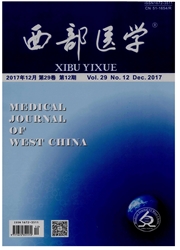

 中文摘要:
中文摘要:
目的建立一种在体基因干扰技术研究神经嵴细胞向平滑肌细胞分化。方法使用鸡胚在体电转染的方法导入绿色荧光蛋白示踪或核内不均一核糖核蛋白A2/B1(heterogeneous nuclear ribonucle Drotein A2/B1,hnRNPA2/B1)特异性吗啉基反义寡聚核苷酸(morpholino)干扰其基因表达。通过分析鸡胚的成活率及转染率确定在体转染的设备参数,之后将胚胎固定、包埋、冰冻切片并进行免疫组织化学染色,在荧光显微镜下观察神经嵴细胞的标记、迁徙及向平滑肌细胞的分化。结果转染电压为7.5V时胚胎成活率和转染率均较高,因此在本实验中作为标准电压。电转后6小时,右侧神经嵴细胞成功表达绿色荧光蛋白。第2天,神经嵴细胞开始向腮弓迁徙并达到第2、3鳃弓。hnRNPAg/BI特异性morpholino可以抑制hnRNPA2/B1的表达从而影响神经嵴细胞的迁徙和分化,导致鳃弓动脉平滑肌层形成障碍,最终破裂。结论鸡胚在体基因干扰技术被成功建立并可用来研究神经嵴细胞向平滑肌细胞分化。
 英文摘要:
英文摘要:
Objective To establish a gene interference technique used for studying the differentiation of neural crest cells (NCCs) to smooth muscle cells (SMCs). Methods The green fluorescent protein (GFP) expression plasmid or heterogeneous nuclear ribonueleprotein A2/B1 (hnRNPA2/B1) specific morpholino antisense oligonucleotide were transfected into chicken embryos in vivo using electricity pulses at 7.5 volts, which was determined by analyzing the survival rate and transfection efficiency of the chick embryo. Embryos were observed under fluorescent microscope to cheek the migration of NCCs firstly, After fixed, the embryos were sectioned and stained with immunohistochemicat staining to show the differentiation of NCCs into SMCs. Results Six hours after electroporation, the right side of NCCs were successfully expressing GFP. On the next day, the NCCs migrated to the branchial arch 2 and 3. hnRNPA2/B1 specific morpholino could not only inhibit the expression hnRNPA2/B1 but affect the migration and differentiation of NCCs, resulting in the rupture of smooth muscle layer of the branchial arch artery. Conciusion The chick embryo in vivo gene interference technol- ogy has been successfully established and can be used to study the differentation of NCCs to SMCs efficiently.
 同期刊论文项目
同期刊论文项目
 同项目期刊论文
同项目期刊论文
 期刊信息
期刊信息
